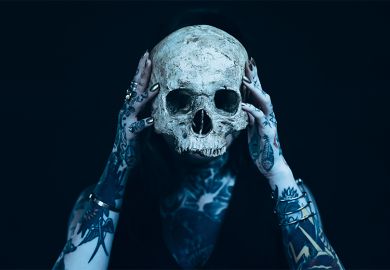In 1939, Q. D. Leavis fulminated against readers of detective fiction, particularly those who "in the last century would have been the guardians of the public conscience in the matter of mental self-indulgence". Leavis could never have imagined that university presses would one day give crime writing serious scholarly attention.
In Lee Horsley's commanding survey of a century of crime fiction, the reader, teacher or scholar will find a familiar historical trajectory: a quick summary of Sherlock Holmes and his contemporaries leads into the classic clue puzzle, which contrasts with the hard-boiled American school.
A thoughtful chapter addresses "Transgression and pathology", after which socio-political critique connects neatly with black appropriations and the "chick dick". Neglected areas such as the gangster novel and the environmental crime story are explored too.
As Horsley reminds us, accounts of the genre are simplified by subsequent writers, who assert the originality of their own rebellion. Raymond Chandler's parody of classic conventions in The Simple Art of Murder increases the contrast between country village and Philip Marlowe's "mean streets"; while Sara Paretsky's V. I. Warshawski emphasises her difference from literary predecessors such as Agatha Christie's Miss Marple.
Critics, too, categorise and simplify, since it is impossible to cover the entire genre, and some arbitrariness in selection is inevitable. Why Peril at End House and not Murder on the Links ? the Hercule Poirot fan might ask.
Why Paretsky's Bitter Medicine rather than Toxic Shock ? Students demand secondary reading, and the mere inclusion of a title may qualify it for the seminar room and admit it to crime writing's pantheon.
Omissions are inevitable; it is too easy to focus on the book that might have been. My personal regrets include Cornell Woolrich, mentioned once in passing, and Edgar Wallace, Leslie Charteris and John Creasey. Few writers destabilise the reader's certainties so much as Woolrich at his most extreme. Wallace's The Four Just Men and The Brigand have roots in earlier popular fiction, from tales of Robin Hood to The Count of Monte Cristo , as well as links with comic-book superheroes.
I would also have appreciated some account of crime fiction beyond the customary British and American examples: perhaps a glance at European innovations.
The book has considerable strengths. Horsley draws on a wide range of sources and offers an overview of useful and historically informed approaches from Todorov's formalism to recent feminist analyses. Most helpful is her development of Rick Eden's account of hard-boiled fiction as satire; she extends this into other areas, suggesting that Chester Himes is best read as a satirist of racism and its effects in 1960s America.
Scholarly clarity is combined with enthusiasm, and recommendations for further reading will delight devotees. Fans should note that this book identifies murderers and describes their methods. It makes a case, too, for the pervasive influence of detective fiction; the chief difference between The Silence of the Lambs and American Psycho is, Horsley suggests, that retailers label one as "crime" and the other as "contemporary fiction".
Like many seminar discussions of crime fiction, this study links consideration of form and technique to an exploration of politics and ethics. I wonder what Leavis would make of that.
Kathleen Bell is senior lecturer in English, De Montfort University.
Twentieth-Century Crime Fiction
Author - Lee Horsley
Publisher - Oxford University Press
Pages - 328
Price - £53.00 and £16.99
ISBN - 0 19 928345 1 and 925326 9



